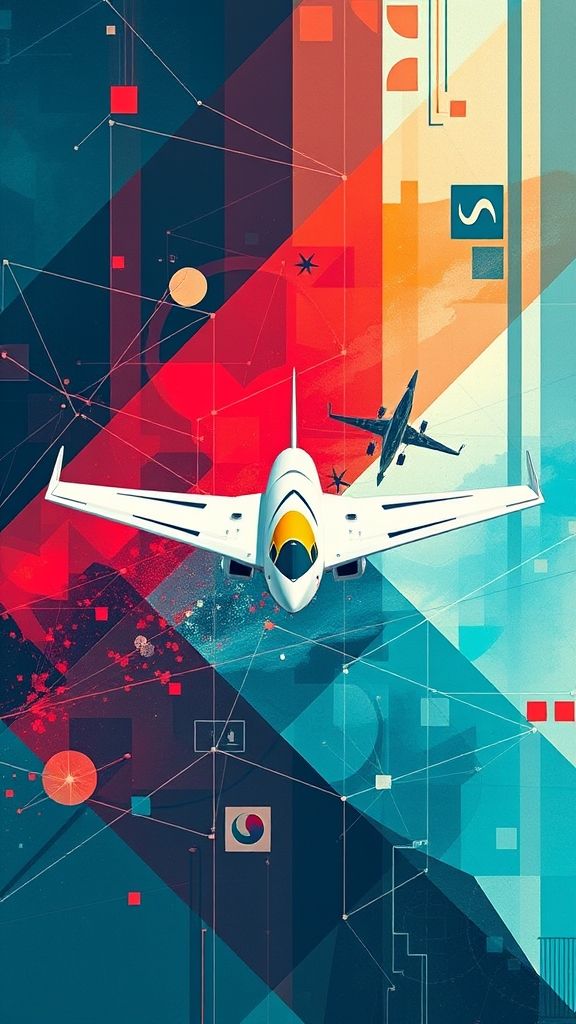Netherlands Eyes Cutting-Edge Skies With Us Backed Air Force Tech
The Netherlands has taken a significant step towards strengthening its military capabilities by …
22. October 2025

Korean Air’s Commitment to Unmanned Aerial Vehicles Takes Center Stage at Seoul ADEX 2025
Seoul, South Korea – Korean Air took a significant step forward in its commitment to unmanned aerial vehicles (UAVs) by showcasing three advanced UAV platforms at Seoul ADEX 2025. Held from October 17-24 at KINTEX in Goyang, the event marked an important milestone in the company’s efforts to develop cutting-edge autonomous aircraft systems.
The first UAV on display was the Low Observable Wingman UAV System (LOWUS) prototype, which represents a significant milestone in Korean Air’s development of manned-unmanned teaming (MUM-T) capabilities. This system enables coordination between manned fighters and unmanned aircraft, paving the way for enhanced military operations. The LOWUS prototype is scheduled to make its first flight in December, marking South Korea’s debut in Collaborative Combat Aircraft.
The LOWUS prototype was developed in collaboration with the Agency for Defense Development (ADD), showcasing Korean Air’s commitment to pushing the boundaries of UAV technology. This achievement demonstrates the company’s dedication to enhancing military capabilities and developing advanced UAV systems.
Another notable UAV on display at Seoul ADEX 2025 was the medium strike UAV prototype, developed by Korean Air in partnership with the ADD. This system is targeted for completion by 2026 and is designed for initial deployment in high-risk reconnaissance missions. The development of this system marks a significant step forward in Korean Air’s efforts to enhance military capabilities and demonstrate its commitment to advanced UAV technology.
Korean Air also displayed its KUS-FX small unmanned collaborative aircraft (SUCA) at the event, demonstrating its ability to develop cutting-edge autonomous aircraft systems. The company’s lineup includes the KUS-FS strategic-class Medium-Altitude UAV, the KUS-FT division-level reconnaissance UAV, and the KUS-VS VTOL UAV.
The company is also developing AI-based autonomous mission technologies that enable UAVs to assess situations and execute missions independently, moving beyond traditional remote-piloting. Korean Air established collaboration with Anduril Industries in August for UAV co-development and local production facility establishment in the Asia-Pacific market.
Korean Air presented its ACROSS (Air Control & Routing Orchestrated Skyway System) traffic management system for Advanced Air Mobility operations alongside AI-powered MRO solutions. This commitment to developing cutting-edge technology is evident in the company’s efforts to enhance air mobility capabilities and improve operational efficiency.
“Korean Air is solidifying its position as a global leader in unmanned aviation, backed by a diverse portfolio of advanced UAV platforms,” said a Korean Air representative. “We look forward to showcasing Korean domestic technologies on the global stage.”
The development of advanced UAV technology has significant implications for the aerospace industry and beyond. As the world continues to urbanize and demand for air transportation grows, companies like Korean Air are playing a critical role in developing innovative solutions that address these challenges.
Korean Air’s commitment to UAV technology is just one example of its broader efforts to innovate and improve its operations. With its global hub at Incheon International Airport (ICN), the airline serves 116 cities in 39 countries on five continents with a modern fleet of 163 aircraft and over 20,000 professional employees.
The airline’s outstanding performance and commitment to the highest level of safety and customer service have widely been recognized. Korean Air has been granted numerous awards including a 5-star airline rating from Skytrax as well as Airline of the Year from both Air Transport World and Airline Ratings. Korean Air is a founding member of the SkyTeam airline alliance, and has grown into one of the largest transpacific airlines through its joint venture with Delta Air Lines.
The company’s investment in advanced air mobility technology reflects its commitment to innovation and customer satisfaction. With its diverse portfolio of UAV platforms and cutting-edge AI-powered technologies, Korean Air is poised to play a leading role in shaping the future of aviation.
As the world continues to evolve, companies like Korean Air will play a critical role in shaping the future of aviation. The development of advanced air mobility technology has significant implications for the aerospace industry and beyond, with opportunities for innovation and growth on the horizon.
In this dynamic landscape, Korean Air’s commitment to UAV technology is a key driver of its success. With its diverse portfolio of UAV platforms and cutting-edge AI-powered technologies, the company is well-positioned to capitalize on emerging trends and drive growth in the Asia-Pacific region.
Korean Air’s partnership with Anduril Industries marks an important step forward in the development of AI-powered UAVs for the Asia-Pacific market. This collaboration underscores the company’s commitment to innovation and customer satisfaction, as it continues to push the boundaries of UAV technology.
The future of aviation is rapidly evolving, with companies like Korean Air at the forefront of this trend. As the world continues to urbanize and demand for air transportation grows, Korean Air is well-positioned to capitalize on these trends and drive growth in the Asia-Pacific region.
With its commitment to advanced UAV technology and AI-powered solutions, Korean Air is poised to play a leading role in shaping the future of aviation. The company’s diverse portfolio of UAV platforms and cutting-edge technologies make it an important player in the rapidly evolving landscape of air mobility.